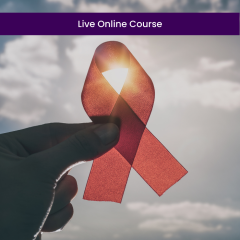Protective Factors as Buffers among High-risk Adolescents (1 CE)
Number of Credits: 1
This course is for: Clinical Psychologists, Counselors, and Marriage & Family Therapists
Course By: Ken Springer, PhD
Content By: Sharma, S., Mustanski, B., Dick, D., Bolland, J., & Kertes, D. A. (2019). Protective factors buffer life stress and behavioral health outcomes among high risk youth. Journal of Abnormal Child Psychology, 47, 1289-1301.
https://doi.org/10.1007/s10802-019-00515-8
Course Description: This study examined whether three protective factors (religiosity, parental monitoring, and collective efficacy) serve as buffers against the effects of urban poverty on African American adolescents. The researchers used self-report scales to measure these protective factors, as well as four risk factors (neighborhood ecology, exposure to violence, exposure to stressors, and racial discrimination) and three behavioral health outcomes (internalizing problems, externalizing problems, and polydrug use). The researchers found that greater cumulative risk predicted higher levels of the each behavioral health outcome, and that each of the three protective factors played a buffering role. Specifically, greater religiosity and greater collective efficacy each buffered the effects of cumulative risk on internalizing problems, while greater parental monitoring and greater collective efficacy each buffered the effects of risk on externalizing problems. These and other findings have practical implications for supporting the behavioral health of African American adolescents living in high-poverty urban neighborhoods.
Learning Objectives:
- Understand the proposed connections among risk factors, protective factors, and behavioral health outcomes among high-risk adolescents
- Describe the main findings of the study concerning the buffering effects of religiosity, parental monitoring, and collective efficacy
- Integrate the strengths and limitations of the study, and summarize the practical implications for promoting the behavioral health of African American adolescents in high-poverty urban settings
Course Outline:
- Read and understand Protective factors buffer life stress and behavioral health outcomes among high risk youth
- Review the Course Description and Learning Objectives
- Understand the hypothesized interrelationships among four risk factors, three protective factors, and three behavioral health outcomes
- Distinguish the ways that each protective factor buffered the impact of cumulative risk on behavioral health outcomes
- Integrate the study's key findings, strengths, limitations, and practical implications
- Work through the post-test questions, using the article as the sole basis for your answers
- Revisit the article for any missed questions and/or to better understand protective factors that buffer the effects of urban poverty on African American adolescents
Approvals:
| Board Approvals | American Psychological Association (APA), NBCC, Florida Board - Social Work, MFT, Counseling, and Psychology, NYSED - Social Work, MFT and Counseling Only, American Academy of Health Care Providers in the Addictive Disorders |
|---|---|
| CE Format | Online, Text-Based |







